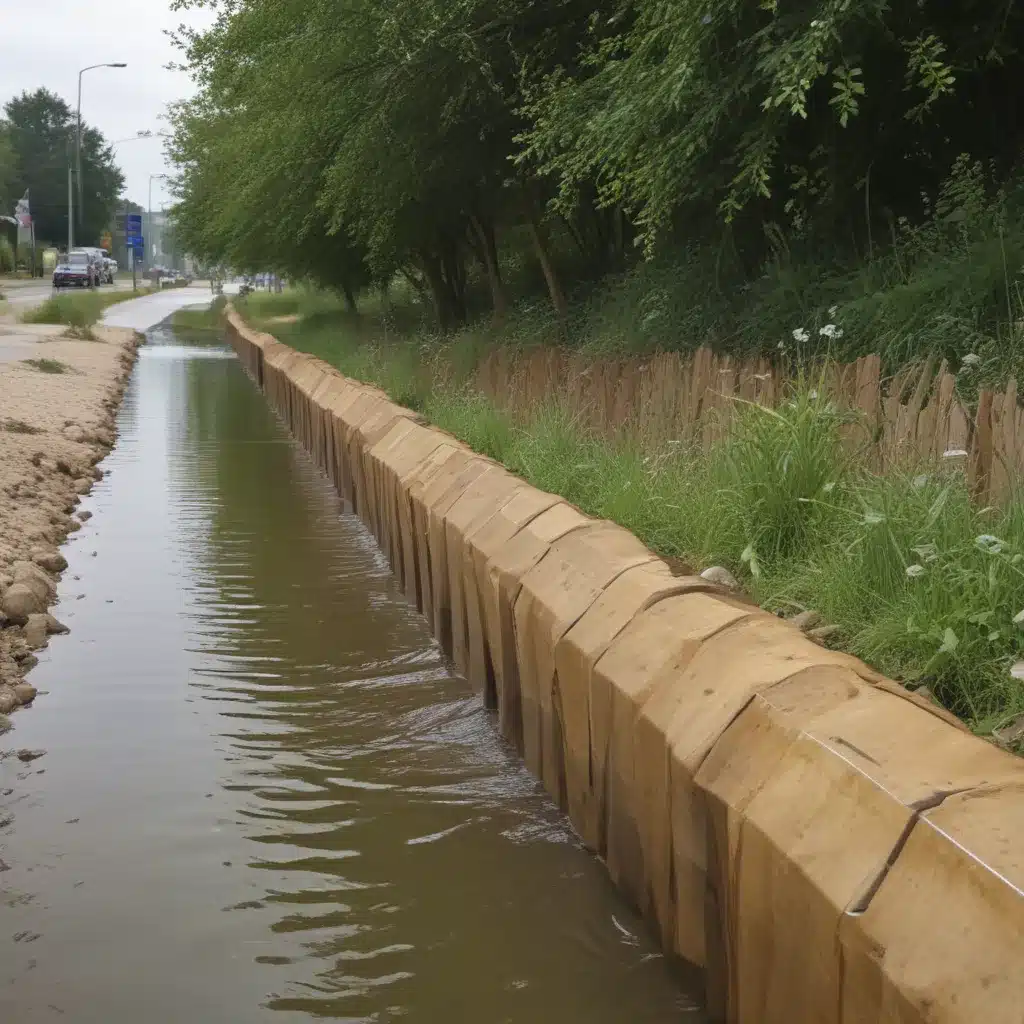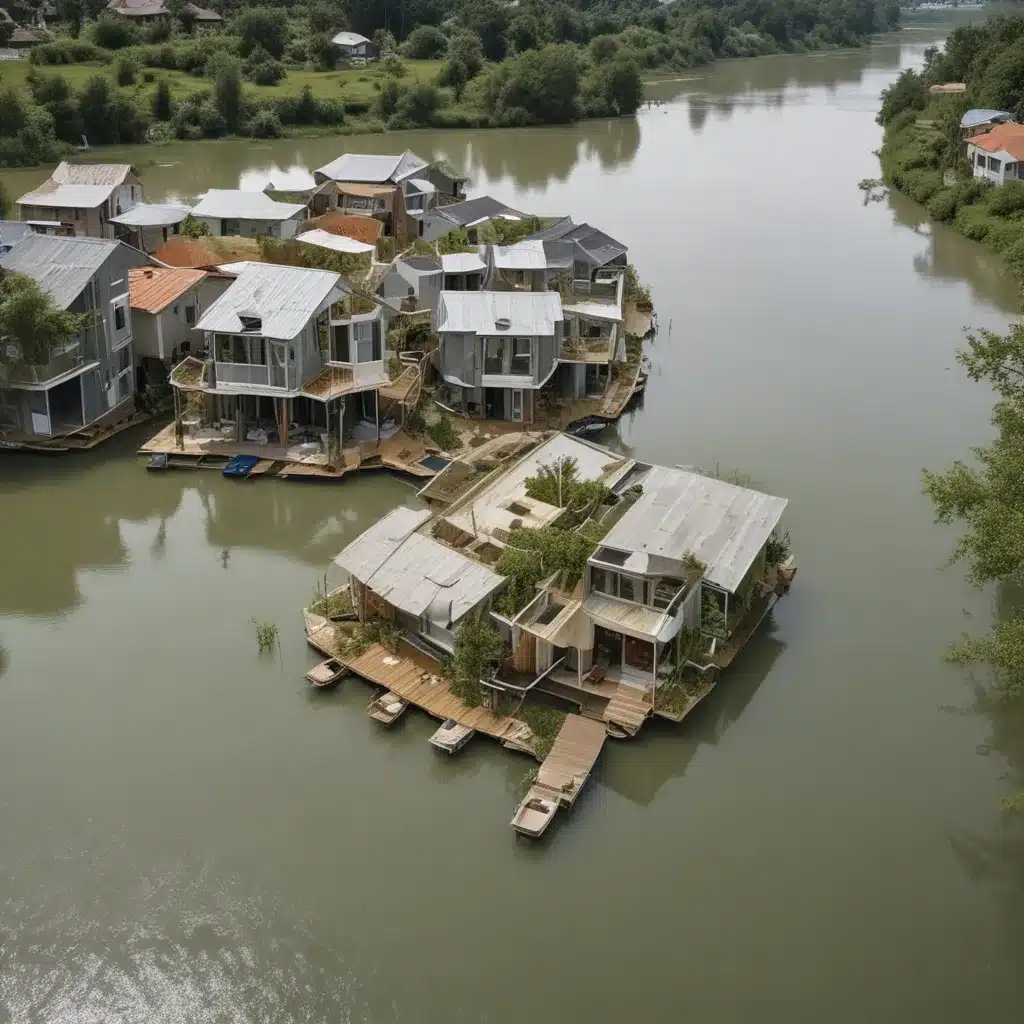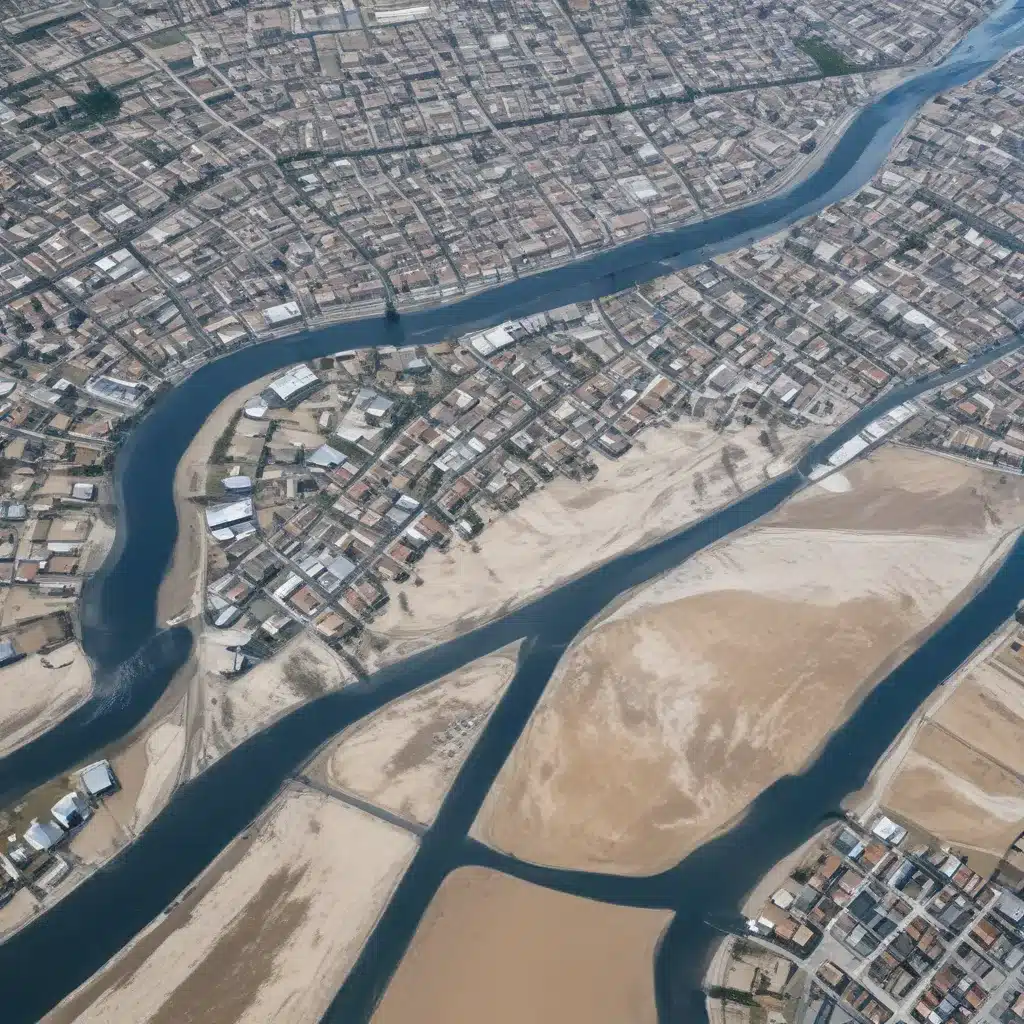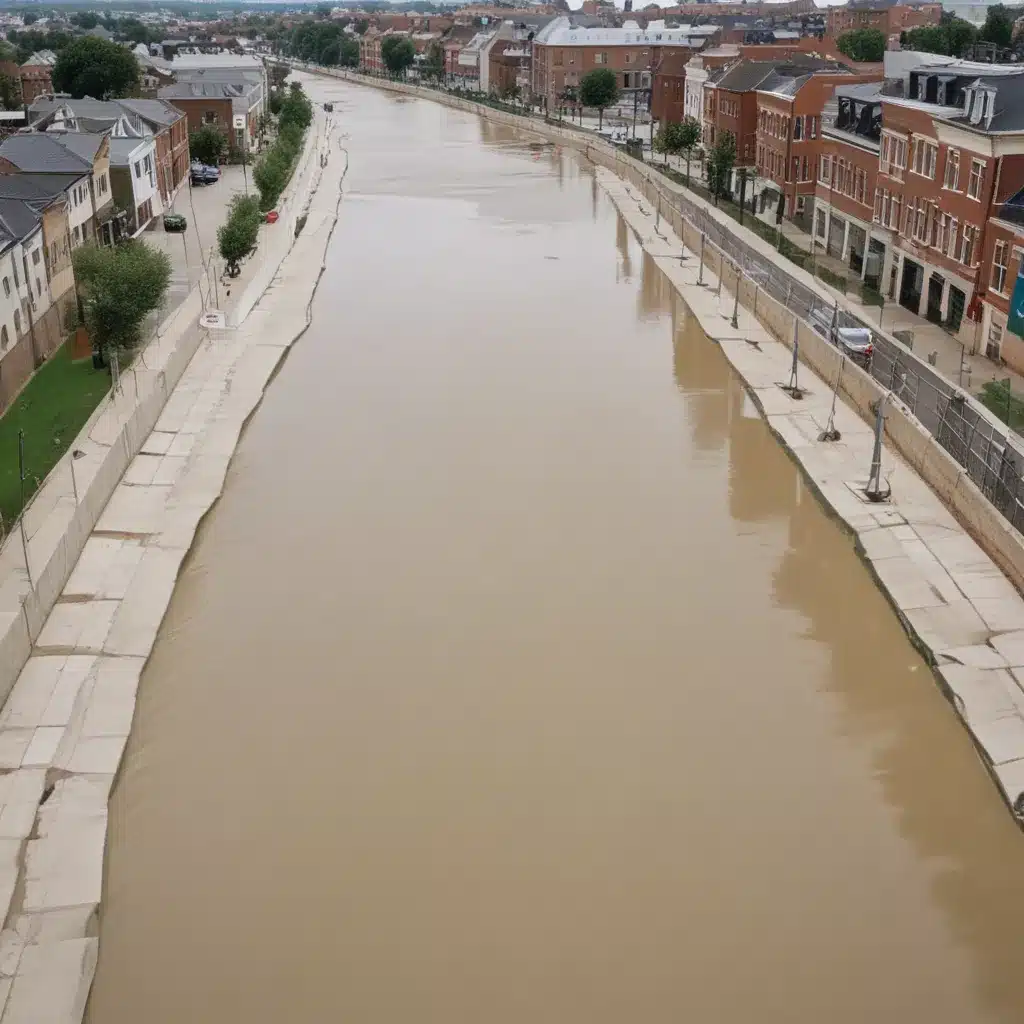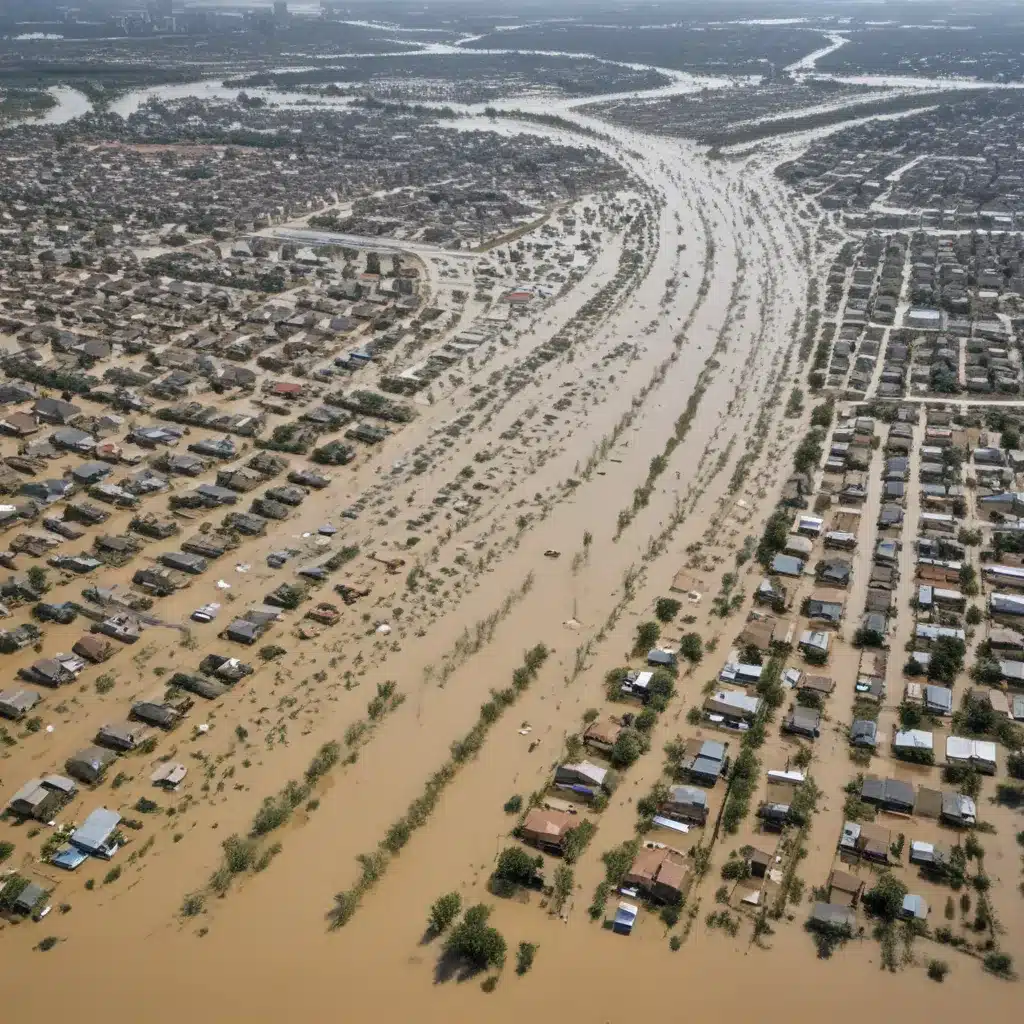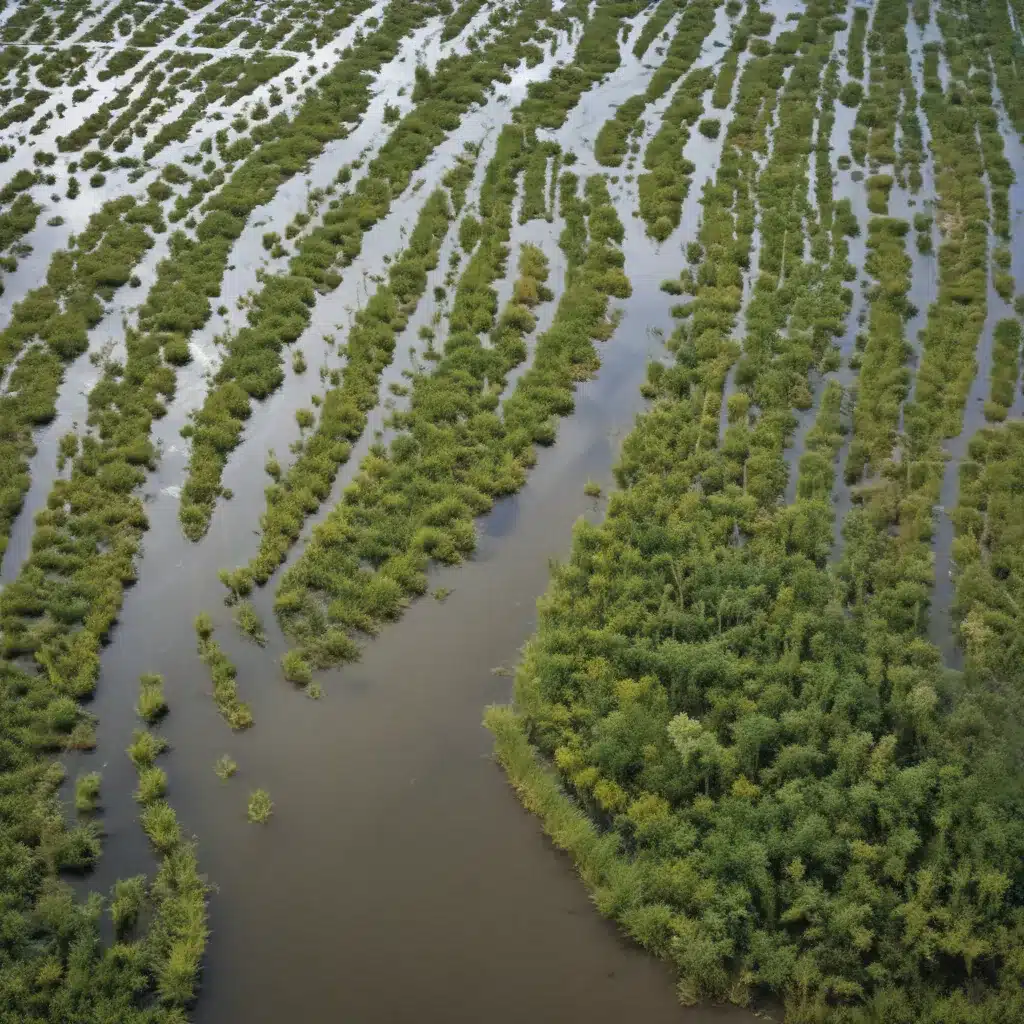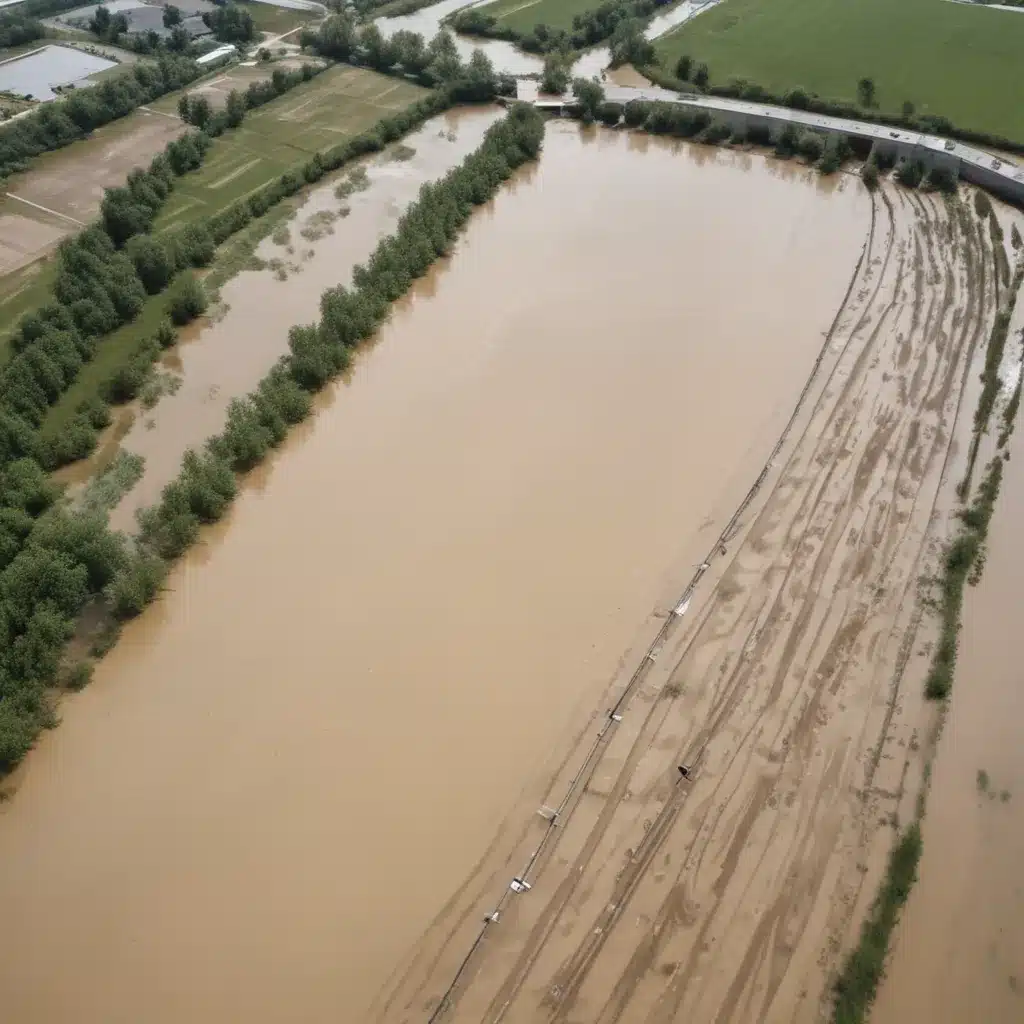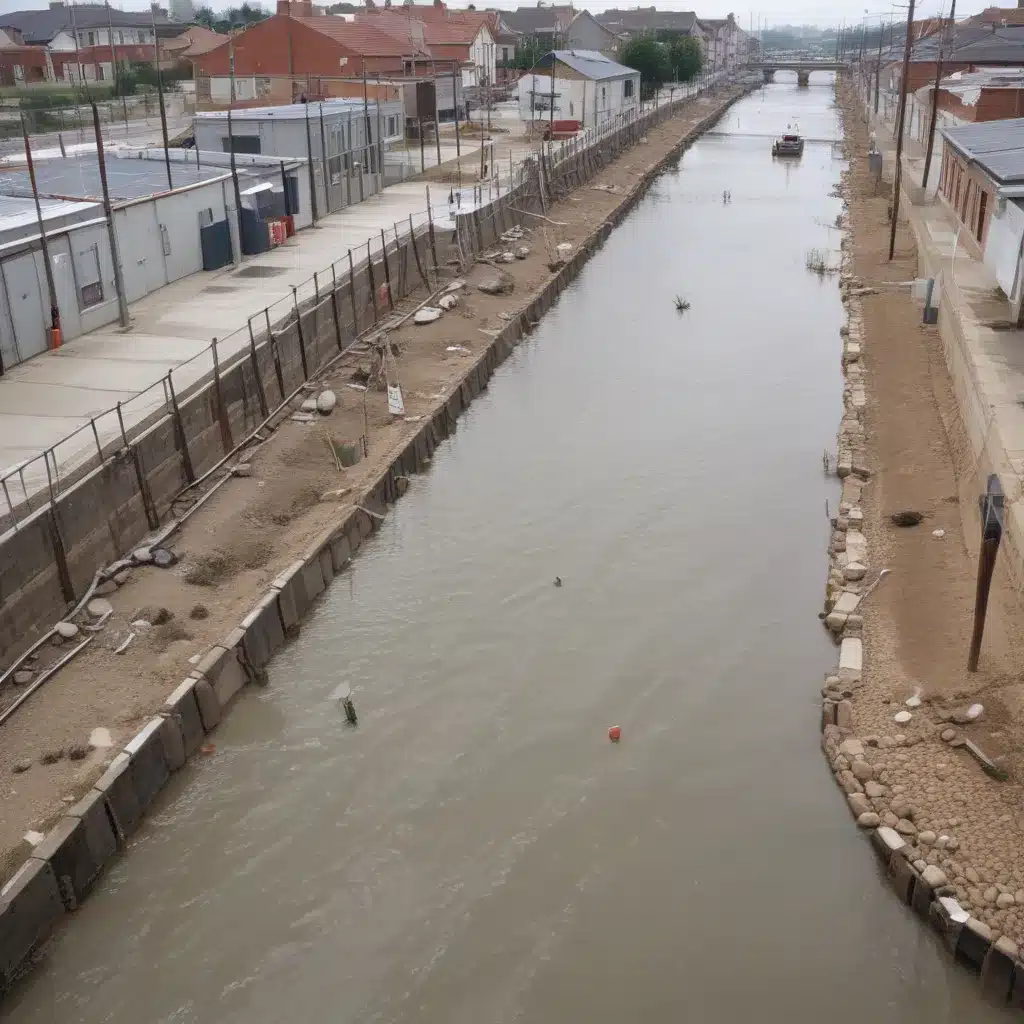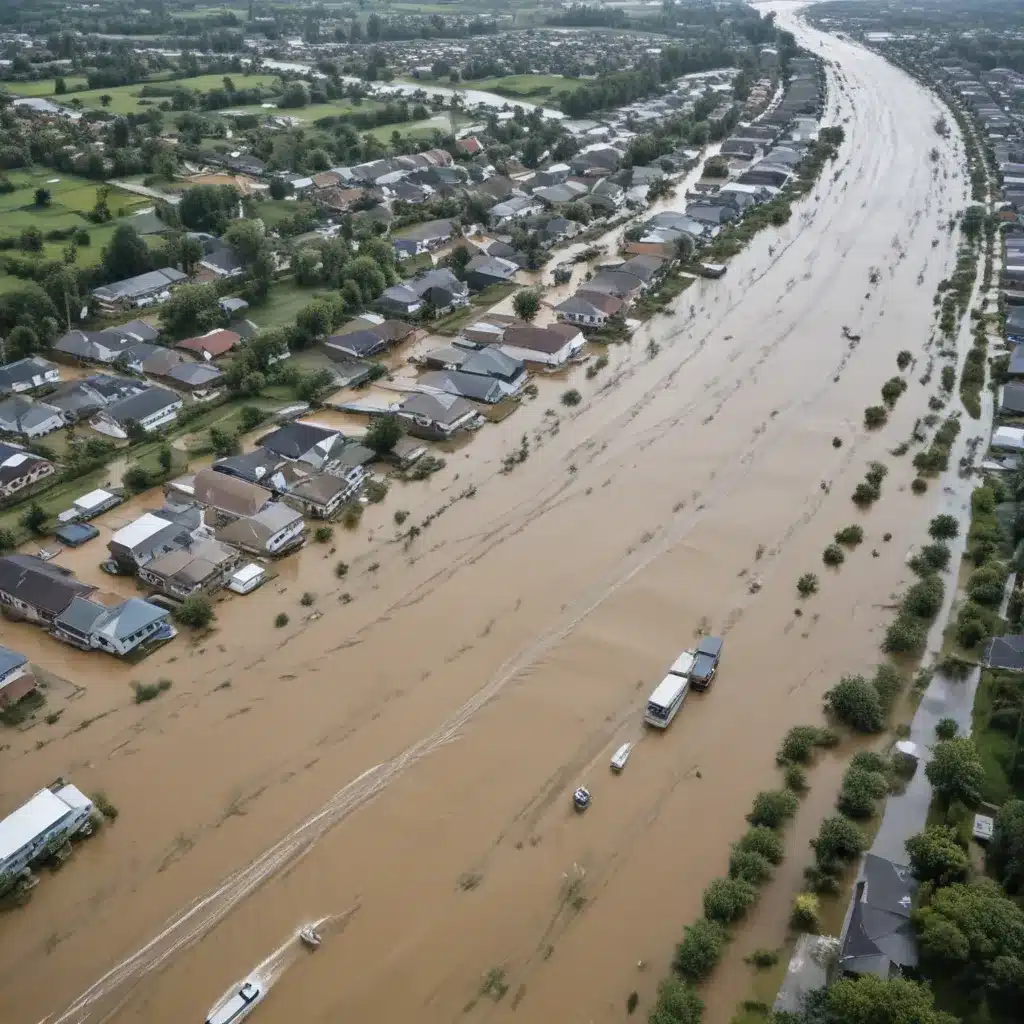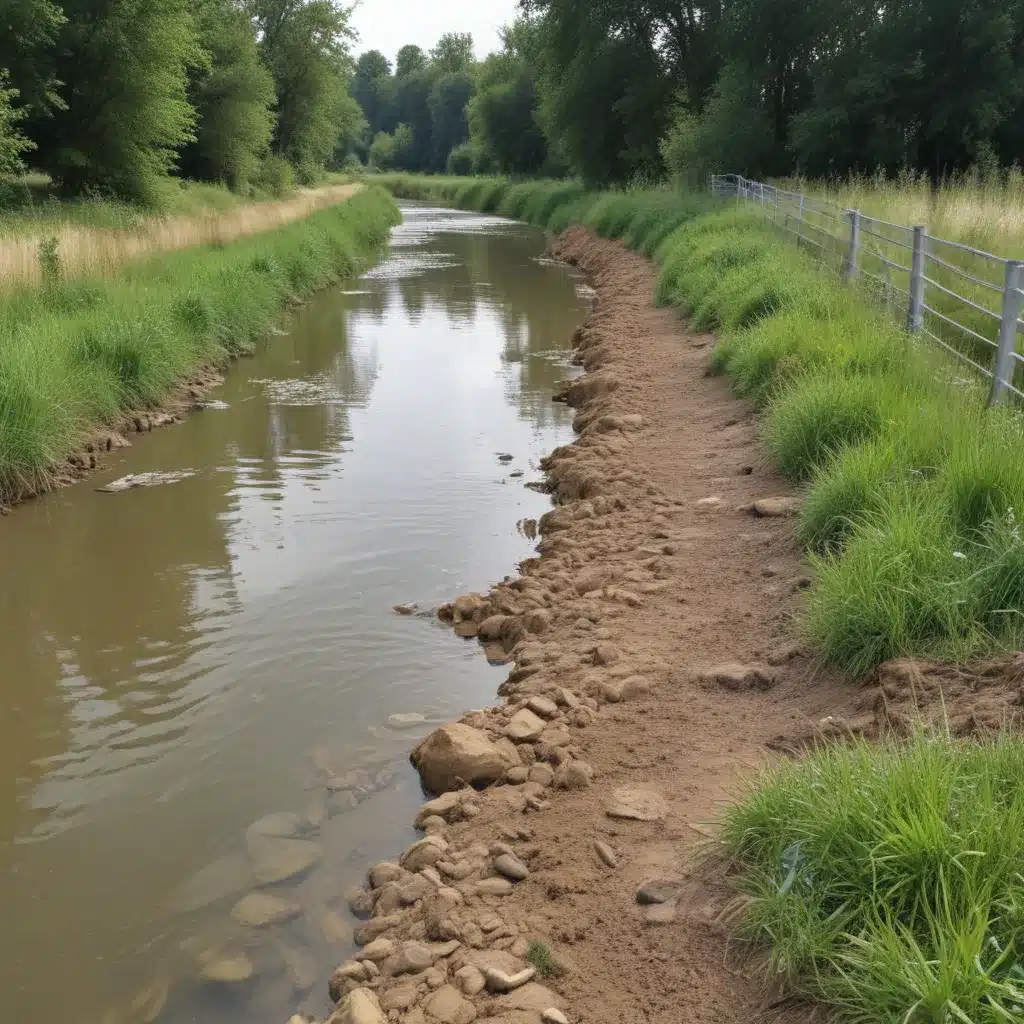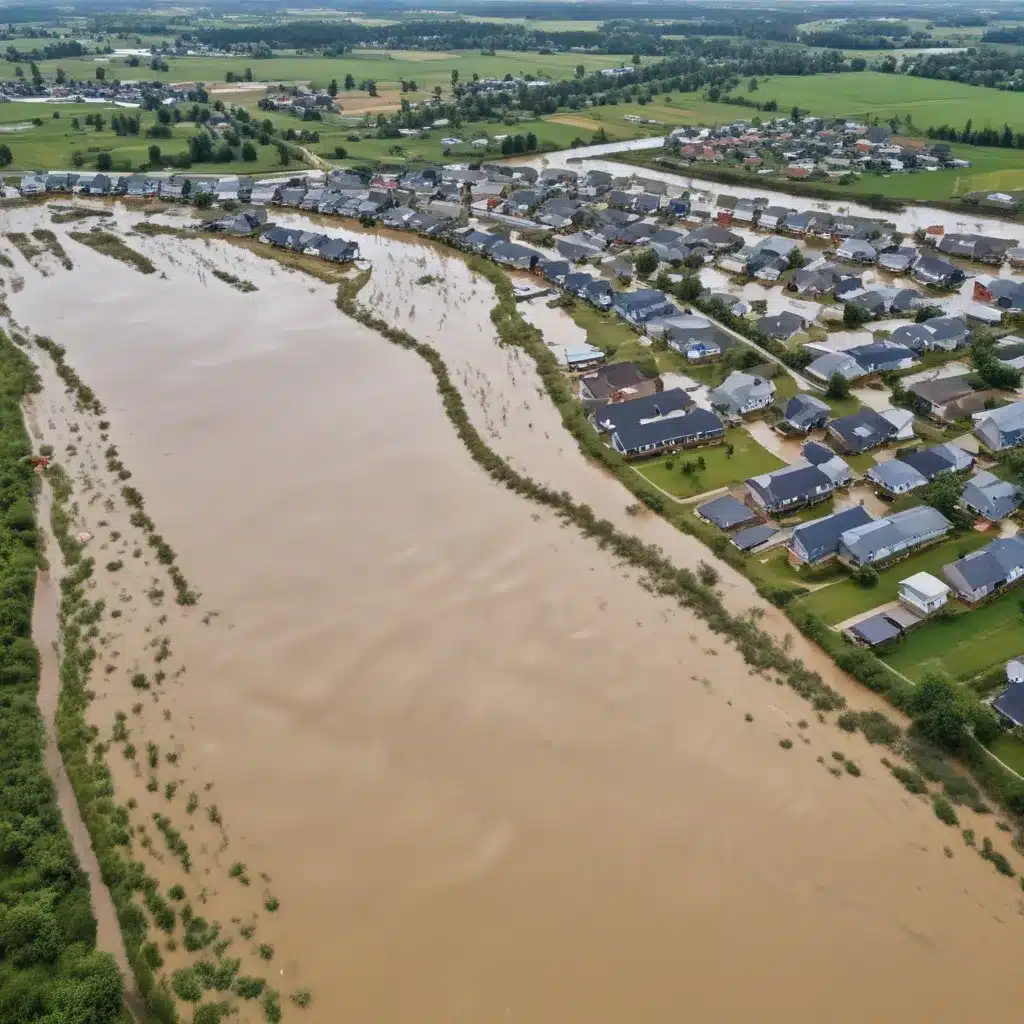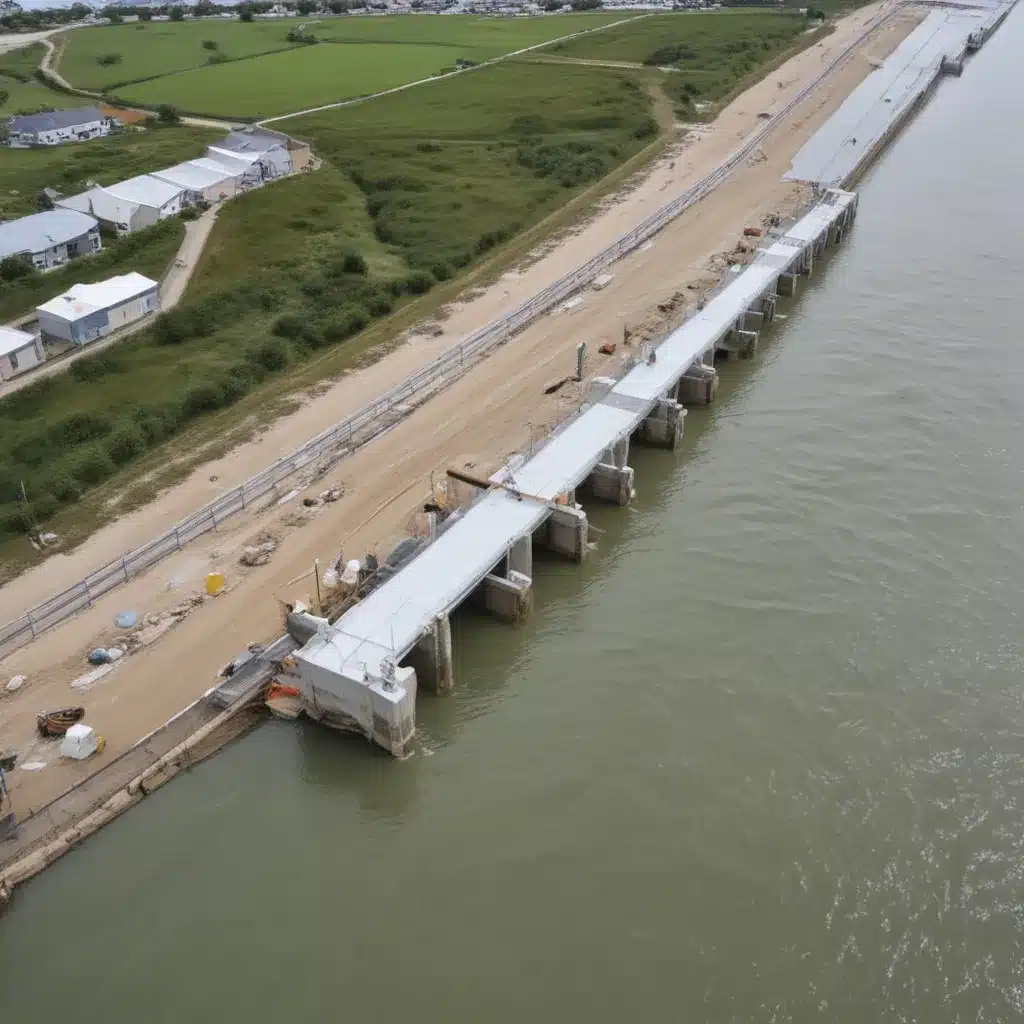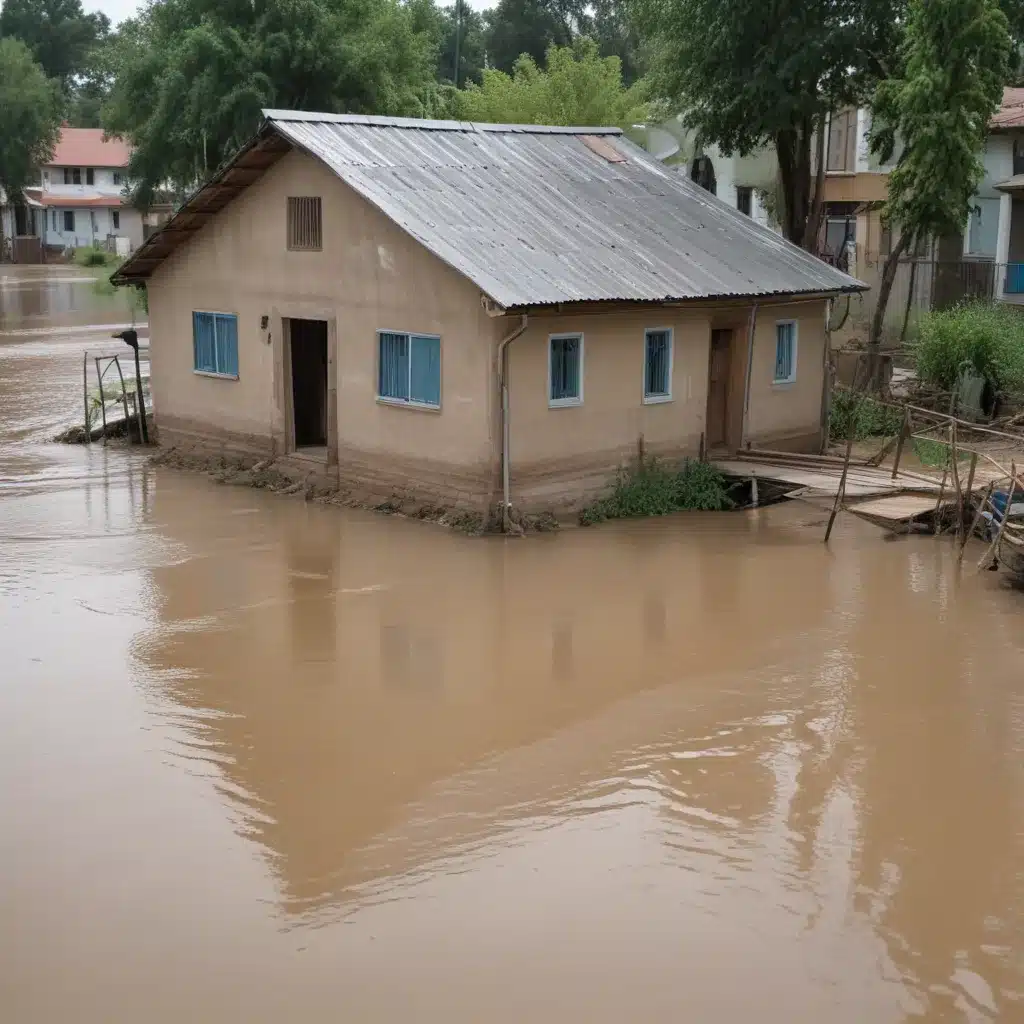When it comes to assessing flood risk, some may argue that it’s simply a matter of predicting rainfall and observing water levels. However, the science behind flood risk assessment is far more complex and crucial to our understanding of this natural disaster. By analyzing various factors such as rainfall patterns, topography, and vulnerability, scientists are able to accurately assess the potential risks associated with flooding. In this discussion, we will explore the intricate details of flood risk assessment, uncovering the hidden factors that contribute to this phenomenon and the implications it has on communities and infrastructure. As we delve into the science behind flood risk assessment, we will gain a deeper appreciation for the importance of this field and the advancements that continue to shape its future.
Key Takeaways
- Advanced rainfall measurement techniques and remote sensing tools, such as weather radars and satellites, are used for accurate flood risk assessment.
- Data-driven flood modeling techniques, including machine learning, gather and analyze vast amounts of data to improve flood prediction accuracy and enhance understanding of flood dynamics.
- Predictive flood mapping combines data from various sources and uses sophisticated algorithms to accurately predict high-risk flood areas and anticipate potential impacts.
- Accurate flood risk assessment is crucial for effective disaster management and mitigation, as it enables proactive measures, informed decision-making, and resource prioritization for intervention.
Understanding Flood Risk Assessment
Understanding flood risk assessment is crucial for effective planning and mitigation strategies. In order to accurately assess flood risk, it is essential to employ advanced rainfall measurement techniques and effective flood risk communication.
When it comes to rainfall measurement techniques, innovation has played a significant role in improving accuracy and reliability. Traditional methods such as rain gauges are still used, but they have been complemented by more sophisticated technologies. For example, remote sensing techniques, such as weather radars and satellites, provide valuable data on rainfall patterns over large areas. This allows for a more comprehensive understanding of the spatial distribution of rainfall and helps identify areas at higher risk of flooding.
In addition to accurate rainfall measurement, effective flood risk communication is key to ensuring that communities are prepared and can take appropriate action. This involves conveying information in a clear and accessible manner, using innovative tools and technologies. For instance, interactive maps can be created to visualize flood risk zones and potential evacuation routes. Mobile applications and social media platforms can also be utilized to disseminate real-time updates and warnings to the public.
Importance of Accurate Flood Risk Assessment
Accurate flood risk assessment is crucial for effective disaster management and mitigation efforts. By utilizing data-driven flood modeling and predictive flood mapping techniques, we can better understand and anticipate the potential impacts of flooding. This enables us to make informed decisions regarding land use planning, infrastructure development, and emergency response strategies, ultimately reducing the vulnerability of communities to flood hazards.
Data-Driven Flood Modeling
Data-driven flood modeling plays a crucial role in assessing the true extent of flood risk and its potential impact on communities. By utilizing advanced techniques such as machine learning for flood modeling, we can gather and analyze vast amounts of data to improve the accuracy of flood predictions. This allows us to better understand the underlying patterns and dynamics of floods, enabling us to develop more effective strategies for risk assessment and mitigation. The use of data-driven flood modeling also allows us to identify vulnerable areas and prioritize resources for intervention, ultimately reducing the devastating effects of floods on communities. Here is a table showcasing the benefits of data-driven flood modeling:
| Benefits of Data-Driven Flood Modeling |
|---|
| Improved accuracy of flood predictions |
| Enhanced understanding of flood dynamics |
| Identification of vulnerable areas |
| Effective resource allocation |
With the continuous advancement of technology, data-driven flood modeling holds great promise for revolutionizing flood risk assessment and helping communities build resilience in the face of increasing flood events.
Predictive Flood Mapping
Utilizing advanced techniques in flood risk assessment, predictive flood mapping plays a crucial role in helping communities prepare for and mitigate the potential impact of flood events. By combining data from various sources and using sophisticated algorithms, predictive flood mapping can accurately predict areas that are at high risk of flooding. This enables communities to take proactive measures such as implementing flood prevention measures and evacuating residents in a timely manner. Additionally, predictive flood mapping can assist in improving rainfall prediction models, leading to more accurate flood forecasting. This not only helps in emergency response planning but also allows for better allocation of resources to areas that are most vulnerable to flooding. Overall, predictive flood mapping is an innovative tool that empowers communities to effectively manage flood risks and protect lives and infrastructure.
Factors Influencing Flood Risk
We must consider various factors that influence flood risk. One crucial factor is rainfall intensity measurement. By accurately measuring the intensity of rainfall, we can predict the amount of water that will flow into rivers and streams, potentially causing flooding. Advanced technologies, such as weather radar and rain gauges, allow us to collect real-time data on rainfall intensity, enabling us to make more accurate flood risk assessments.
Another important factor is floodplain zoning. Floodplain zoning involves dividing areas into different zones based on their flood risk level. This allows for better land use planning and prevents the construction of critical infrastructure, such as hospitals or schools, in high-risk flood areas. By implementing proper floodplain zoning measures, we can minimize the potential damage caused by floods and ensure the safety of communities.
To further enhance flood risk assessment, we can leverage innovative technologies like remote sensing and machine learning. Remote sensing techniques, such as satellite imagery and LiDAR, provide valuable data on topography and land cover, which are crucial for understanding flood dynamics. Machine learning algorithms can analyze vast amounts of data and identify patterns, helping us to predict flood events with greater accuracy.
Furthermore, community engagement and public awareness play a vital role in flood risk reduction. Educating individuals about the risks and providing them with the necessary information to take appropriate action can significantly reduce the impact of floods. By fostering a culture of preparedness and resilience, we can empower communities to effectively respond to flood events.
Rainfall Patterns and Their Role in Flood Risk Assessment
When it comes to assessing flood risk, rainfall patterns play a crucial role. The variations in rainfall can directly impact the occurrence and severity of floods. Additionally, the intensity of rainfall is a key factor in determining the likelihood of flooding, as heavy rainfall can overwhelm drainage systems and lead to rapid water accumulation.
Rainfall Variations and Floods
Rainfall patterns play a crucial role in assessing the risk of floods. Understanding rainfall trends and their impact on flood frequency is essential for effective flood risk assessment. Here are three key points to consider:
-
Changing rainfall patterns: Climate change and other factors have led to shifts in rainfall patterns. It is important to analyze these trends to predict potential flood risks accurately.
-
Intensity and duration: The intensity and duration of rainfall events can greatly influence the likelihood of flooding. Short but intense bursts of rainfall can overwhelm drainage systems and cause flash floods.
-
Seasonal variations: Seasonal variations in rainfall can also affect flood risk. For example, heavy rainfall during the monsoon season can lead to widespread flooding in certain regions.
Rainfall Intensity and Flooding
Assessing flood risk requires a deep understanding of the role that rainfall patterns play in determining the intensity and likelihood of flooding events. By analyzing historical rainfall data and using advanced forecasting models, scientists and urban planners can accurately predict rainfall intensity and identify areas at high risk of flooding. This information is crucial for effective urban planning and infrastructure development, as it allows for the implementation of measures to mitigate flood damage. To better illustrate this point, let’s take a look at the following table:
| Rainfall Intensity (mm/hr) | Flood Risk Level | Recommended Actions |
|---|---|---|
| 0 – 10 | Low | Regular maintenance |
| 10 – 30 | Medium | Improved drainage systems |
| 30+ | High | Elevated structures |
This table demonstrates how rainfall intensity can be used to determine the level of flood risk and the appropriate actions to take. By incorporating rainfall intensity forecasting into urban planning, we can create innovative solutions that minimize the impact of flooding on communities.
Topography and Its Impact on Flood Risk
Topography plays a crucial role in determining the level of flood risk in a given area. By conducting topography analysis and flood risk mapping, experts can gain valuable insights into how the land’s natural features and elevation affect the potential for flooding. Here are three key ways in which topography impacts flood risk:
-
Elevation: The elevation of an area is a key factor in flood risk assessment. Areas located at lower elevations, such as valleys or coastal plains, are more prone to flooding due to their proximity to bodies of water. On the other hand, areas with higher elevations, such as hills or mountains, are generally less susceptible to flooding. By understanding the elevation of an area, experts can better predict the potential for flooding and develop effective mitigation strategies.
-
Slope: The slope or gradient of the land also plays a significant role in flood risk. Areas with steep slopes can experience rapid runoff during heavy rainfall, increasing the risk of flash floods. In contrast, areas with gentle slopes allow for better absorption of water into the soil, reducing the likelihood of flooding. By analyzing the slope of an area, experts can identify vulnerable regions and implement measures to manage stormwater effectively.
-
Drainage Patterns: The natural drainage patterns of an area impact flood risk as well. Rivers, streams, and other water bodies act as natural channels for water to flow. Understanding the patterns of these channels is crucial in determining flood risk. If a region has a complex network of waterways, it may experience higher flood risk due to increased water volume and reduced flow capacity. By studying the drainage patterns, experts can identify areas prone to flooding and devise appropriate flood management strategies.
River Flow Rates and Their Significance in Flood Risk Assessment
When assessing flood risk, understanding river flow rates is crucial. The flow rate of a river refers to the volume of water passing through a specific point in a given amount of time. Factors that affect flow rates include rainfall intensity, topography, and the size and shape of the river channel. By analyzing and monitoring flow rates, scientists can better predict and assess the potential for flooding in a certain area.
Flow Rate Importance
River flow rates play a crucial role in assessing the significance of flood risk. Understanding the measurement and variability of flow rates helps us innovate and improve flood risk assessment techniques. Here are three reasons why flow rate importance cannot be overlooked:
-
Accurate flow rate measurement: Precise measurement of flow rates allows us to gather reliable data on the amount of water passing through a river. This data is essential for determining flood risk levels and designing appropriate mitigation strategies.
-
Flow rate variability: Flow rates can vary significantly over time, with seasonal changes and extreme weather events. Understanding this variability helps us anticipate potential flood scenarios and develop adaptive strategies to mitigate their impact.
-
Real-time monitoring: Continuous monitoring of flow rates enables us to detect sudden changes or anomalies that could indicate an impending flood. This real-time data allows for more effective flood forecasting and early warning systems, reducing the potential damage caused by floods.
Factors Affecting Flow Rates
Understanding the factors that affect flow rates is crucial in assessing the significance of flood risk and improving flood risk assessment techniques. Two important factors that influence flow rates are rainfall intensity and topography. Rainfall intensity refers to the amount of rainfall received in a specific time period. When rainfall is intense, a larger volume of water enters the river system, leading to increased flow rates and a greater flood risk. Topography, on the other hand, refers to the shape and slope of the land. Steep slopes can accelerate the flow of water, while flat terrain can impede it. By considering both rainfall intensity and topography, we can better understand and predict the flow rates of rivers, enabling us to develop more effective flood risk assessment strategies.
Climate Change and Its Effect on Flood Risk
Climate change significantly impacts flood risk, necessitating a comprehensive understanding of its effects. As our world continues to experience shifts in weather patterns, it is crucial to adapt our flood risk assessment strategies to ensure the safety of our communities. Here are three key ways in which climate change affects flood risk:
-
Increased precipitation: Climate change is leading to more frequent and intense rainfall events. The warmer atmosphere can hold more moisture, resulting in heavier downpours. These extreme rainfall events can overwhelm drainage systems and increase the likelihood of flooding. To address this, climate change adaptation strategies should include improved stormwater management systems and infrastructure.
-
Sea level rise: Rising sea levels are another consequence of climate change. As the polar ice caps melt, coastal areas are becoming more vulnerable to flooding. This poses a significant threat to low-lying regions and coastal cities. Effective floodplain zoning is crucial to mitigate the impacts of sea level rise and ensure that development in these areas is done in a sustainable and resilient manner.
-
Changes in river flow: Climate change also affects river flows, leading to alterations in flood patterns. Changes in precipitation patterns and melting snowpack can result in irregular river flows, increasing the risk of flash floods. Understanding these changes and incorporating them into flood risk assessments can help identify areas at higher risk and inform the development of appropriate flood management strategies.
Analyzing Historical Flood Data
Let’s start by discussing the points of data analysis methods and predictive modeling techniques when it comes to analyzing historical flood data. These methods allow us to gather and analyze large amounts of data from past floods, helping us identify patterns, trends, and potential risk factors. By applying predictive modeling techniques, we can then use this historical data to make accurate predictions about future flood events and better understand the potential risks involved.
Data Analysis Methods
To better comprehend the patterns and trends of flood occurrences, we utilize various data analysis methods to analyze historical flood data. These methods allow us to extract valuable insights and make informed decisions regarding flood risk assessment. Here are three cutting-edge data analysis techniques that we employ:
-
Data Visualization Techniques: By visualizing historical flood data, we can identify spatial and temporal patterns, enabling us to understand how floods behave in different regions and time periods. Through interactive maps and charts, we gain a clearer picture of flood dynamics, aiding in the identification of high-risk areas.
-
Machine Learning Algorithms: Leveraging the power of artificial intelligence, we employ machine learning algorithms to analyze vast amounts of historical flood data. These algorithms can identify complex patterns and relationships that may not be apparent through traditional statistical analysis. By training these models on historical flood data, we can predict future flood events with greater accuracy.
-
Statistical Analysis: Alongside advanced techniques, we also utilize statistical analysis to uncover trends and correlations within historical flood data. This enables us to quantify the likelihood of different flood scenarios and assess the potential impact on communities and infrastructure.
Predictive Modeling Techniques
Now, let’s explore how we can use predictive modeling techniques to analyze historical flood data. In this era of innovation, predictive analytics and machine learning algorithms offer us exciting possibilities in flood risk assessment. By analyzing past flood events, we can uncover patterns and trends that help us understand the factors contributing to flood occurrences. Predictive analytics allows us to make accurate predictions about future flood events based on historical data. Machine learning algorithms, on the other hand, enable us to train models that can continuously learn and improve as new data becomes available. These techniques empower us to develop sophisticated flood risk models that can provide valuable insights and inform decision-making processes. With predictive modeling, we can proactively mitigate flood risks and take necessary actions to protect lives and properties.
Predictive Modeling for Flood Risk Assessment
We utilize predictive modeling to assess flood risk, employing advanced techniques to accurately anticipate potential inundation. By leveraging predictive analytics and machine learning applications, we are able to generate accurate and reliable flood risk assessments. Here are three key ways in which predictive modeling revolutionizes flood risk assessment:
-
Enhanced Data Analysis: Predictive modeling allows us to analyze vast amounts of data, including historical flood records, weather patterns, and topographic information. By applying advanced algorithms, we can identify patterns and relationships within the data that may not be immediately apparent. This enables us to make more accurate predictions about future flood events and their potential impact.
-
Real-time Monitoring and Early Warning Systems: Predictive modeling can be used in conjunction with real-time monitoring systems to provide early warning of potential flood events. By continuously analyzing data from weather sensors, river gauges, and satellite imagery, we can detect early warning signs of flooding and issue timely alerts to at-risk communities. This proactive approach can save lives and minimize property damage.
-
Risk Assessment and Planning: Predictive modeling allows us to assess flood risk at various spatial scales, from individual properties to entire regions. By simulating different flood scenarios, we can identify areas that are most susceptible to flooding and prioritize mitigation efforts accordingly. This information is invaluable for urban planners, insurance companies, and government agencies in making informed decisions about land use, infrastructure development, and emergency preparedness.
Remote Sensing Techniques in Flood Risk Assessment
By utilizing remote sensing techniques, we can further enhance flood risk assessment capabilities and gather valuable data for accurate predictions. Remote sensing applications play a crucial role in flood risk mapping, providing us with detailed information about the Earth’s surface and its changes over time. These techniques involve the use of satellite imagery, aerial photography, and other advanced technologies to monitor and analyze flood-prone areas.
One of the primary benefits of remote sensing in flood risk assessment is the ability to obtain data from large areas in a relatively short period. Satellite imagery provides a comprehensive view of the landscape, allowing us to identify potential flood risks and vulnerabilities. By analyzing these images, we can detect changes in land cover, vegetation density, and water levels, which are crucial factors in assessing flood risk.
Another advantage of remote sensing is its ability to capture data in real-time or near-real-time. This allows us to monitor flood events as they occur, providing emergency response teams with timely and accurate information. By integrating remote sensing data with predictive modeling techniques, we can improve our understanding of flood dynamics and make more informed decisions during emergency situations.
Furthermore, remote sensing techniques enable us to create detailed flood risk maps, which are essential tools for land-use planning and disaster management. These maps provide valuable information for policymakers, urban planners, and insurance companies, helping them identify areas at high risk of flooding and implement appropriate mitigation measures.
Integrating Data for Comprehensive Flood Risk Assessment
To achieve a comprehensive flood risk assessment, it is crucial to integrate various data sources and analyze them collectively. By combining data from different sources, such as remote sensing techniques and on-the-ground measurements, we can gain a more holistic understanding of flood risk. Here are three key ways in which integrating data can enhance flood risk assessment:
-
Monitoring rainfall trends: By analyzing historical rainfall data, we can identify patterns and trends that can help us predict future flood events. Integrating data from weather stations, radar systems, and satellite imagery allows us to track rainfall patterns over time and understand how they contribute to flood risk. This information can then be used to develop more accurate flood models and improve early warning systems.
-
Assessing floodplain development: Integrating data on land use, urban development, and infrastructure can provide valuable insights into flood risk. By overlaying floodplain maps with data on population density, building types, and transportation networks, we can identify areas that are more vulnerable to flooding and prioritize mitigation efforts. This integration of data enables us to make informed decisions about land use planning, infrastructure development, and emergency preparedness.
-
Incorporating socio-economic factors: Flood risk assessment is not just about the physical characteristics of an area; it also involves understanding the socio-economic context. By integrating demographic data, economic indicators, and social vulnerability indices, we can identify communities that are disproportionately affected by floods and develop targeted strategies for resilience-building. This data integration approach ensures that flood risk assessment takes into account the unique challenges and needs of different communities.
Assessing Vulnerability to Floods
Assessing vulnerability to floods requires a comprehensive understanding of the factors that contribute to the susceptibility of communities and infrastructure to flood damage. To accurately assess vulnerability, innovative methods and tools are employed, such as vulnerability assessment methods and the flood vulnerability index.
Vulnerability assessment methods are crucial in determining the level of vulnerability faced by a community or infrastructure. These methods take into account various factors, including the physical characteristics of the area, such as elevation and proximity to water bodies, as well as the social and economic aspects, such as population density and infrastructure quality. By analyzing these factors, vulnerability assessment methods provide valuable insights into the potential impacts of floods on a specific area.
One widely used tool in vulnerability assessment is the flood vulnerability index. This index combines multiple indicators, such as exposure, social vulnerability, and adaptive capacity, to provide a comprehensive measure of vulnerability. By assigning weights to these indicators, the index quantifies the vulnerability level of different areas, allowing for prioritization of resources and targeted interventions.
Innovative approaches are constantly being developed to improve the accuracy and efficiency of vulnerability assessments. For example, remote sensing technologies and machine learning algorithms can be used to collect and analyze vast amounts of data, providing real-time information on flood vulnerability. Additionally, participatory methods that involve local communities in the assessment process can help capture local knowledge and perspectives, enhancing the effectiveness of vulnerability assessments.
Assessing vulnerability to floods is a complex task that requires cutting-edge tools and methods. By employing vulnerability assessment methods and the flood vulnerability index, we can gain a deeper understanding of the factors that contribute to vulnerability and develop effective strategies to reduce the impacts of floods on communities and infrastructure.
Impacts of Floods on Communities and Infrastructure
After assessing vulnerability to floods, it is important to understand the significant impacts these natural disasters have on communities and infrastructure. Floods can have devastating effects on agriculture, causing widespread damage to crops, livestock, and farmland. This can lead to food shortages, higher food prices, and economic instability within the community. Additionally, floods can disrupt the supply chain, making it difficult for farmers to access necessary resources and equipment for agricultural production.
-
Impacts on agriculture: Floods can wash away topsoil, which is essential for crop growth, and contaminate water sources, making them unsuitable for irrigation. This can result in reduced crop yields and long-term damage to the agricultural sector. Farmers may also face financial losses due to damaged infrastructure and the loss of livestock.
-
Community resilience: Floods can test the resilience of a community, highlighting the need for innovative solutions to mitigate the impacts. Investing in flood-resistant infrastructure, such as flood walls and levees, can help protect communities from the destructive power of floods. Implementing early warning systems and emergency response plans can also improve community resilience and reduce the loss of life and property.
-
Infrastructure damage: Floods can cause significant damage to infrastructure, including roads, bridges, and buildings. This can disrupt transportation networks, hinder emergency response efforts, and impede access to essential services. Innovative approaches, such as the use of smart infrastructure and resilient design principles, can help minimize the damage caused by floods and ensure faster recovery after the event.
Understanding the impacts of floods on communities and infrastructure is crucial for developing effective strategies to mitigate their effects. By prioritizing innovation and community resilience, we can build a more sustainable future that can withstand the challenges posed by these natural disasters.
Evaluating the Effectiveness of Flood Risk Management Strategies
We can evaluate the effectiveness of flood risk management strategies by analyzing their impact on reducing flood damages and increasing community resilience. One key aspect of evaluating these strategies is assessing their cost effectiveness. It is crucial to determine whether the benefits of implementing a particular flood risk management strategy outweigh the costs incurred. This evaluation helps decision-makers prioritize the most efficient and sustainable approaches to mitigate flood risks.
To evaluate cost effectiveness, we consider factors such as the initial investment required for implementing the strategy, ongoing maintenance costs, and the potential reduction in flood damages. By conducting a comprehensive cost-benefit analysis, we can identify strategies that provide the greatest return on investment and allocate resources accordingly. This approach ensures that limited resources are utilized effectively and efficiently.
Another important aspect of evaluating flood risk management strategies is community engagement. Engaging the local community in the decision-making process fosters a sense of ownership and empowers individuals to actively participate in flood risk reduction efforts. Community engagement can take various forms, such as public consultations, workshops, and education campaigns. It is essential to involve community members in the planning, implementation, and evaluation stages of flood risk management strategies to ensure their effectiveness and sustainability.
Furthermore, community engagement helps to build trust between stakeholders and promotes a collaborative approach to flood risk management. By involving the community, we tap into their local knowledge, experiences, and perspectives, which can provide valuable insights and innovative solutions to address flood risks. This participatory approach fosters a sense of shared responsibility and increases the likelihood of successful flood risk reduction outcomes.
Future Advancements in Flood Risk Assessment Technology
The future holds promising advancements in flood risk assessment technology. As technology continues to evolve, so does our ability to accurately assess and predict flood risks. Here are three exciting future advancements in flood risk assessment technology:
-
Advanced Remote Sensing: Future technology will allow us to gather more precise data about flood-prone areas using advanced remote sensing techniques. Satellites equipped with high-resolution cameras and radar systems will provide real-time imagery and data, allowing us to monitor flood events more effectively. This will enable us to identify vulnerable areas and assess the potential impact of flooding with greater accuracy.
-
Artificial Intelligence and Machine Learning: The use of artificial intelligence (AI) and machine learning algorithms will revolutionize flood risk assessment. These technologies can analyze vast amounts of data, including historical flood records, weather patterns, and terrain data, to generate accurate flood risk models. AI can also help in predicting extreme weather events and their potential impact on flood risk, providing valuable insights for effective flood management strategies.
-
Integrated Data Platforms: The future of flood risk assessment lies in integrated data platforms that bring together various sources of information, including weather forecasts, river level sensors, and historical flood data. These platforms will provide real-time updates and enable decision-makers to access comprehensive and up-to-date information about flood risks. By integrating data from multiple sources, we can gain a holistic understanding of flood risk, leading to more informed and effective flood management strategies.
These advancements in future technology will not only enhance our understanding of flood risks but also contribute to more efficient and proactive flood risk management. By harnessing the power of advanced remote sensing, AI, and integrated data platforms, we can significantly improve our ability to assess and mitigate flood risks, ultimately minimizing the devastating impacts of flooding on communities and infrastructure. The future of flood risk assessment looks promising, and these advancements will play a crucial role in building more resilient and sustainable communities.

